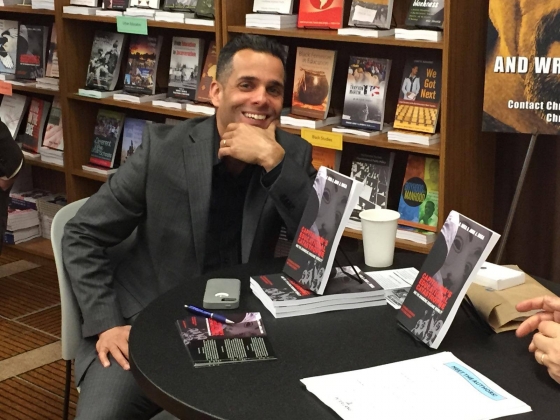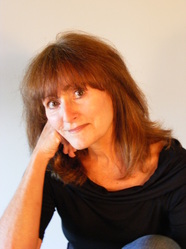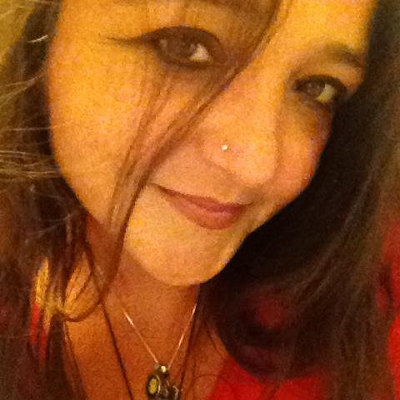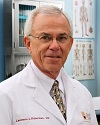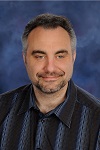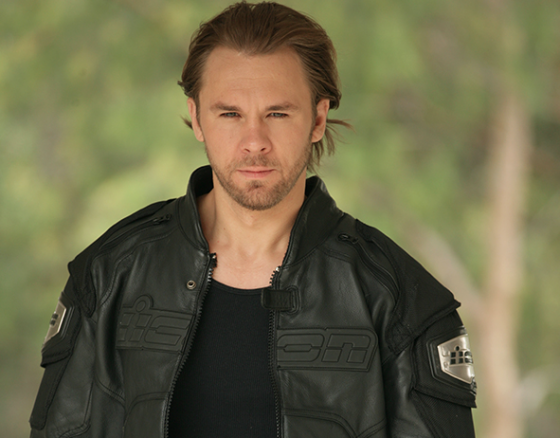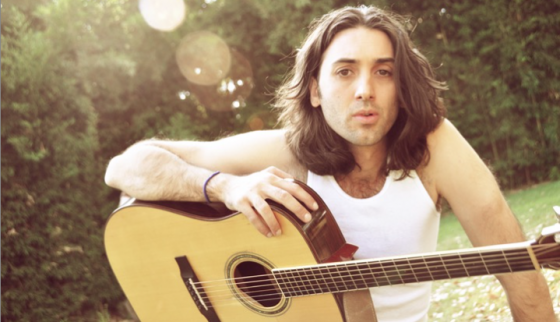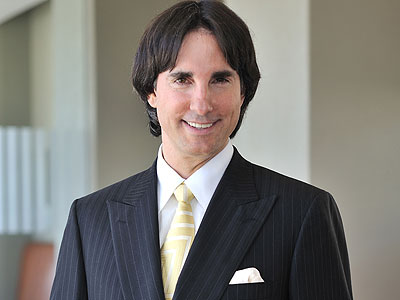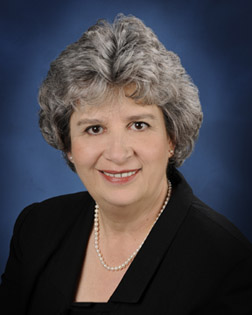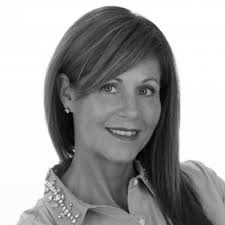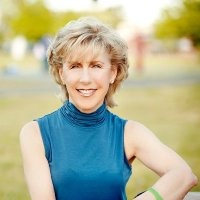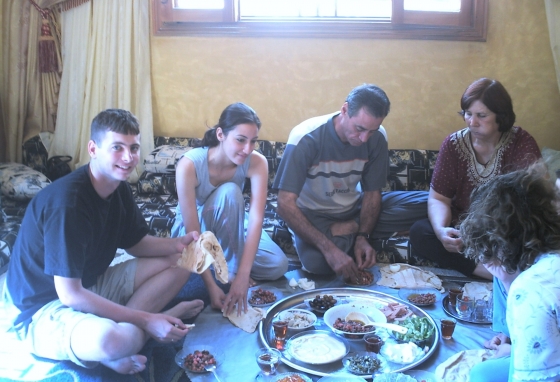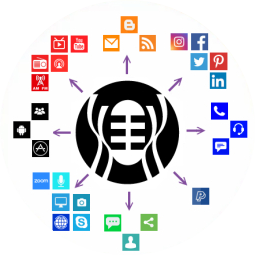Headlined Guests
Headlined Guests that have appeared on BBS Radio TV
Denny Taylor is Professor Emeritus of Literacy Studies at Hofstra University and founder of Garn Press. She began teaching in 1968 in the East End of London; there were 43 children in her first kindergarten class. She has been continuously engaged in ethnographic literacy research since 1977 and was inducted into the Reading Hall of Fame in 2004. She has written thirteen books and published 40 articles and chapters on literacy in family, school and community settings.
Dr. Taylor regards art, literature and science inseparable. She is a lifelong activist and scholar committed to nurturing the imagination and human spirit.
Dr. Taylor is also the director of the International Center for Everybody’s Child at Hofstra University, which provides assistance to teachers and children in the aftermath of catastrophic events, supports international educational projects, and maintains an international network of teachers, doctors, social workers, and mental health professionals who can assist teachers working with children in crisis. Her ethnographic research focuses on the impact of catastrophic events on the lives of children and the social response of the educational community to mass trauma. Her field work includes research in Israel, the West Bank and Gaza. She provided first response support in the Gulf Region in the aftermath of Hurricane Katrina. One of her most recent publications, The Kate Middleton Elementary School: Portraits of Hope and Courage, published by Scholastic, provides support for teachers who are first responders following a catastrophic event.
Dr. Rosa is a member of Save Our Schools, United Opt-Out, and the Badass Teachers Association. He is an Assistant Professor in the Department of Educational Leadership at the University of Massachusetts - Dartmouth, an activist, writer, and researcher working with youth. He serves on a number of boards and works with several organizations both locally and nationally whose work is ultimately concerned with the healing of humanity.
Ricardo Rosa's current research centers on emerging articulations of educational privatization and its effects on organizational behavior in educational settings and possibilities for transformative leadership. His research also focuses on curricular theory and praxis within and beyond the boundaries of normative schooling.
I was born in Greenwich, Connecticut, but moved to Pacific Palisades in southern California when I was three. My dad had an office in the house, but then built one in the back yard so he could find some peace to write by getting away from my sister, me and our menagerie of dogs, cats and even two pet rats.
Always preferring the East Coast, the change of seasons and the slower pace of small college towns, I remained in upstate New York to attend college. First Alfred University and then transferring to Elmira College where I earned a degree in Elementary Education with a minor in English. Upon graduation I substitute taught, worked at a school for children with special needs, and then was a preschool teacher at Cornell University's Early Childhood Program & Cooperative Nursery School.
I have always loved writing. If my dad liked my writing he said so. Conversely, if not, he would declare it “interesting.” I wrote predominately poetry until I was published in The Twilight Zone, The Original Stories, an anthology, in which I adapted two of my father's teleplays, One for the Angels and The Changing of the Guard into short stories. The latter was subsequently published in The Twilight Zone Magazine. Additionally, I have had poetry published in The Cornell Daily Sun and Visions. I am represented by Erica Spellman-Silverman at Trident Media Group.
Recently I started work on a novel and continue to promote my father's legacy as a Board Member of the Rod Serling Memorial Foundation.
Since I can remember I’ve been deeply fascinated by plant life. As I child I loved having my hands in the dirt. I spent a lot of time alone in the backyard eating strange bugs and poisonous berries. This deep connection to the natural world and the spirits of the plants encouraged my self-study. After many years of self-practice I began honing my studies and completed an advanced medical herbalism program led by Paul Bergner at the North American Institute of Medical Herbalism in Boulder, CO. Teaching people about herbs is what I live for. I specialize in dream-work, stress relief and aphrodisiacs. I also trained with indigenous shamans in the jungles of Ecuador, learning many healing practices including cleansings (limpias), purgatives and herbal bathing.
In 2011, I created this herbal company Dream Catcher Botanicals so I could share these exquisite medicines. We joyfully handcraft my products including potent tinctures, exotic teas, incenses, and rare species of seed from all around the world. We use organic or wild crafted herbs and only the finest most vibrant ingredients available to produce these lovely products! We carry a special line of handcrafted Rare and Exotic plant medicines from all around the world. We strive to have excellent quality products made with love for Dream Enhancement, Divination and Healing.
Owner of Wiccan Moonsong, Priestess, Writer, Artist, and Mom to two amazing little ones. For those who may not know me I am a Wiccan Priestess, and highly intuitive. I also work closely with the Angels and my guides. I work with several divination methods, holistic healing, intuitive counseling, and I teach.
My second guest, Board Certified Gastroenterologist Lawrence Hoberman, MD, is the creator of EndoMune Advanced Probiotic and founder of Medical Care Innovations. He has spent more than 40 years practicing medicine and is board certified in both Internal Medicine and Gastroenterology. Frustrated by the lack of options to treat his patients suffering from Irritable Bowel Disease (IBD) in the early 2000s, Dr. Hoberman met with a PhD microbiologist to identify a combination of bacteria that might work to destroy the harmful bacteria living in the intestines, improving and maintaining the health of adults. The result is the development of his own effective probiotic supplement: EndoMune Advanced Probiotic.
Dr. Hoberman currently sees patients as a part of a health and wellness practice that stresses preventative medicine. He is in practice at Health by Design, located in San Antonio, Texas. He is available for speaking engagements about digestive health and the benefits of probiotics and has spoken at several conferences.
Dr Rich Snyder is an osteopathic physician board certified in Internal Medicine and Nephrology (the study of kidney disease). His areas of specialization include kidney disease, high blood pressure, adrenal health and medical education. He is Associate Professor of Clinical Medicine at Temple University School of Medicine and Clinical Professor of Medicine at the Philadelphia College of Osteopathic Medicine. He is the author of five books including Adrenal Fatigue For Dummies and What You Must Know About Kidney Disease: A Practical Guide For Using Conventional and Complementary Treatments. He is also the author of What You Need to Know About Dialysis: The Secret to Surviving and Thriving on Dialysis and is also the High Blood Pressure Expert on About.com
KAYD CURRIER
Actor/ Model/Stuntsman Kayd Currier is a curious study in the polarity of opposites. While maintaining an easy, natural, rugged American masculinity, he is simultaneously emotionally sensitive and open, with a developed feminine side. The dichotomy of contrasts creates a most interesting male archetype—the sensitive tough guy with the heart and soul of a poet–strong yet vulnerable. The Brad Pitt visual references are obvious, as well as the Fallen Angel model that Heath Ledger and Kurt Cobain personified, without the victimized tragedy. With his quintessential American mannerisms, good looks and boyish charm, he easily represents the new order of a young Hollywood star in a hip and contemporary way.
Originally from the New England area, Kayd had first lived in Boston, then in Arizona before coming out to the West Coast to pursue an acting career. Born July 22, 1983 in Derry, New Hampshire to Heather Angers, a nurse and to Richard Currier, an avid motorcycle rider who would later operate his own machine shops, Kayd was placed on a motorbike from age one, and was riding his own first motorbike at three years old! At 17 Kayd Started racing motorcycles then in 1998 became a factory sponsored motorcycle roadracer. Kayd has also owned multiple motorcycle shops. Specializing in custom builds, rigging for film and motorcycle stunt specialties.
Kayd’s professional work history in Arizona and Hollywood includes a host of stunts, dramatic leading roles in film and TV such as LEGION, THE END TABLE, Born to be a Star, The Cure and many and a Sci-Fi feature film, ISF1. He also hosted TV shows, including 37 episodes of STARQUEST. His California theatre experience includes THE NEXT STAGE THEATRE featuring PINK FLOYD: THE DARK SIDE OF THE MOON, Angry young women. While his modeling work includes a striking SUE WONG fashion campaign for the noted designer. Kayd also recently did the campaign for designer, Antonio Barragan’s DEMON RIFF, a contemporary collection of Avante-Garde menswear.
MARCO AIELLO
Throughout Marco Aiello’s music career, people have often struggled to define his style. This isn’t the cliche story of an artist with an original sound – but rather, an exploration of what happens when the son of struggling Italian immigrants experiences powerful artistic influences from two vastly different musical cultures.
The result is evident on Aiello’s first solo album August Light, where there’s an undeniable intimacy. Aiello’s voice and vocal phrasings draw you in with a softness that glows as it bounces around the musical textures of acoustic guitars merging with telecaster counter melodies. There’s a vulnerability and sweetness that is the foundation of the songs on August Light – and Aiello is able to be soft without compromising his command for your ear. There’s intensity behind every note – and by the time you’ve listened to the entire album, you’ve experienced a dynamic vocal style that’s rare in today’s singer-songwriters. Aiello unleashes his voice at just the right moments, too. Aiello is so confident with tenderness, that in the movements in August Light where there is explosion – it has a deeper and dramatic impact. The vocalist and producer are clearly intentional about this – Mike Castonguay (imaginationsurplus.com) supports Aiello with arrangements and musical choices that accentuate Aiello’s take on songwriting – which is oddly modern and throwback at the same time. Castonguay approaches August Light like a young Daniel Lanois flirting with Phil Spector while throwing in some of Aiello’s 70’s Italian singer-songwriter influences. It’s strange – but it’s comforting to hear the “wall of sound” approach work so well with such a quieter and acoustic based record.
The haunting thing about Marco Aiello’s voice is that while it stands out with phrasing, tonal qualities and cadence that’s uniquely his – it’s immediate and familiar at the same time. Why shouldn’t it be? You’ve heard this voice before even if you weren’t aware of it. Aiello has spent his musical career using his voice in so many ways within professional entertainment – the chances you haven’t heard him before are unlikely. You’ve heard or seen him on every major network whether it’s NBC, CBS, MTV or even NICKELODEON. You’ve heard his voice on TV, Films and national commercial jingles. When the Grammys honored the Beatles, a jingle featuring Aiello’s voice rendering a take on “Hello, Goodbye” for Target was aired. Whether it’s a songwriter singing in the background in AMC’s Mad Men, an inspirational song during The Biggest Loser – or an American car commercial where “that guy sounds reminiscent of Bono – but different” – his voice has been there all along. He toured nationally with his acoustic band – “The Red” – and gained critical acclaim for being a skilled live performer. Reviewers like to muse that Aiello’s performance style “makes you feel like you’re hanging out with him in his living room” – and he is one of those performers that easily commands an audience. August Light is the album that finally captures that very essence – and packages it in a way that a bigger audience can explore. This record elevates Marco Aiello’s emergence in an extreme way because Castonguay is the producer that figured out how to introduce a strange talent so that it’s accessible and timely. The 11 songs on August Light don’t hurt either – this is a songsmith who isn’t afraid to push the boundaries of songwriting while keeping every track true to its immediate goal – connecting with a listener in the simplest and most direct way possible.
“I’m often asked about my ‘sound’ and how I came up with it,” explains Aiello. “You don’t come up with a sound – your sound is a reflection of who you are and what your soul is here to express. I was introduced to music very young by my father. On the one hand, he was listening to great American artists from the 60’s and 70’s – The Rolling Stones, The Beatles, Led Zeppelin, Pink Floyd… On the other, he played records by Italian Singer-Songwriters – Lucio Battisti, Umberto Tozzi, Pooh – wow what a mouthful, right? Kids growing up here would never have accessed this music – these were legit Italian folk and rock artists. They had very original arrangements, weird production, poetic lyrics and were known for being great singers – not because they were necessarily technical singers – they just had expressive and passionate voices. My earliest memory in life – is sitting in front of my father’s stereo, I must have been 3 or 4. My first conscious thought that I remember was – ‘Wow – somebody made that music and now i’m listening to it.’ It happened with spreads of music that to anyone else would seem conflicting. That blend – that insane distance between the two cultural frameworks in music merged inside of me at a really young age. It was a time when my family was immigrating to a new country and it was an unstable time – that music got written inside of me and maybe it was confused. Maybe the code had to get screwed up for that mini version of me to process it. I think some of the tendencies in my music are perhaps unfamiliar to American ears – and that may give the illusion of a new sound – but I’d argue that it’s only the feeling of it that is foreign. American artists are the coolest – they are the epitome of brilliance and cool and emotional power. Italian artists from the 70’s were ridiculously vulnerable – there’s this place they were willing to go as artists that’s pure and a raw exposure of personal flaws and pain – and there’s a courageousness there that you can’t ignore. I consider myself an American artist in that my music is speaking directly to an English speaking audience. But then there’s that blend of Italian influences – a language I still speak. It’s something that’s deep in my soul and I feel like August Light captured the emotional signature of the two coming together.”
Dr Demartini is considered one of the world's leading authorities on human behavior and personal development. He is the founder of the Demartini Institute, a private research and education organization with a curriculum of over 72 different courses covering multiple aspects of human development.
His trademarked methodologies, the Demartini Method and the Demartini Value Determination, are the culmination of 42 years of cross-disciplinary research and study. His work has been incorporated into human development industries across the world.
Dr Demartini travels 360 days a year to countries all over the globe, sharing his research and findings in all markets and sectors. He is the author of 40 books published in over 29 different languages. He has produced over 60 CDs and DVDs covering subjects such as development in relationships, wealth, education and business. Each program is designed to assist people to activate leadership and empower themselves in all seven areas of their lives: Financial, physical, mental, vocational, spiritual, family and social.
Dr. Carla Garcia is a board certified Doctor of Oriental Medicine with more than 15 years of experience in Thermography, the best alternative to a Mammogram, and over 30 years in complimentary medicine. She has performed thousands of screenings in the U.S. and Canada. She has trained in the United States and Germany and is certified as a Clinical Thermographer by the American College of Clinical Thermology, the only Non-Profit, Medical Thermography Board in the United States. Dr. Garcia has been serving the Santa Fe, Albuquerque area for more than 15 years.
Anne Leighton's Poetry Book, THE LEIGHTON EXPLOSION
Officially Released!
Our second segment of the show today welcomes another special guest … Anne Leighton who is president of Anne Leighton Media * Music Services * Motivations a multi-faceted company that helps artists who need development, marketing and/or promotional services in their careers. Some of her clients include … Ian Anderson/Jethro Tull/Martin Barre, Blackmore’s Night, Grand Funk Railroad, Gentle Giant, Orleans, KKB (with Bruce Kulick), Shun NG & Magic Dick, The Strawbs, The Family Stone, and Jann Klose to name just a few.
Anne’s worked in radio at WZIR-Buffalo, WRNW-Briarcliff Manor, WFUV-Bronx, WBUZ-Fredonia, and was an editor at HIT PARADER magazine, plus freelanced for a number of magazines including FELINE WELLNESS, CATFANCY, MUSCLEMAG INTERNATIONAL, INSIDE KARATE/KUNG FU, GOLDMINE, and CREEM. Anne’s play’s include REACH FOR THE SUN, which was performed by Poets Repertory Theater of Long Island, ONE WAY TO HEAVEN performed by the San Antonio Living Church, and THE PASSION OF MARY which was read at the Kingsbridge Library Center in her hometown of the Bronx.
Her latest project is Anne Leighton's Poetry Book, THE LEIGHTON EXPLOSION which will be released on October 15th.
I’ve worked with Anne for several years now and she’s one of the best in the business.
It’s my pleasure to welcome Anne Leighton to The Ray Shasho Show!
CHRIS FLISHER is a nationally recognized astrologer, and is an accomplished artist, teacher, speaker, writer, and radio host. In an effort to fuse his skills together, Chris also draws on his deep knowledge of astrology to create individual soul maps as well as healing mandalas. Astrology provides direct insight into the characteristics of the person, while the spiritual art of the mandala reflects the tangible experience of the healing soul. Using these time-tested tools Chris is able to guide people towards fulfilling their true purpose. Here are some recent Testimonials from clients.
Chris sees astrology and the mandala as complementary tools, which together bring about greater understanding of the Self and provide guidance and optimism for challenging and changing times. His desire to share this unique approach led him to launch “Turning of the Wheel” in September of 2007, an online radio show discussing art, astrology and spiritual adventure.
Chris is a long-standing member of the National Council for Geocosmic Research and contributes a weekly astrology column for several news publications and produces weekly astrology videos that are also available each week via YouTube. Chris has been a weekly contributing radio host of Turning Of The Wheel which is celebrating its seventh year of continuous broadcasting. He is always available for private astrology consultations.
An artist for our times, Chris’ work is regularly shown in galleries, cafes, and public art events in and around New England. He was selected by the U.S. Department of State, Arts In Embassies program to represent the United States in the embassy in Praia, Cape Verde where his artwork is on loan through 2015. He traveled to Cape Verde as a guest of the US ambassador in the summer of 2013 to host workshops for three orphanges in Cape Verde. He also participated in an international symposium on the mandala in Rome and exhibited in the highly-acclaimed Pool Art Fair in New York City. He also creates custom-commissioned art based on the unique characteristics of the birth chart, which are one-of-a-kind reflections of an individual's uniqueness.
Additionally, his art has been licensed by publishers, art skins, puzzles and more. Chris also teaches classes and workshops, and is available for speaking engagements, radio interviews, and live astrology readings.
Chris is an avid music writer and published poet. Chris was formerly the co-host of two nationally-syndicated radio talk shows, both of which focused on alternative methods for facing the challenges of life, love, and evolving. He is currently on the docent staff at the deCordova Sculpture Park and Museum and a regular contributor to numerous community adult education programs where he teaches both astrology and the art of the mandala.
Michael C. Irving, Ph. D. Bio
Dr. Michael Irving knows pain. In Toronto, Canada he works at Wings Neural Rehab with brain injury clients, accident and trauma victims and those suffering with debilitating chronic pain. He loves his work and gains much satisfaction from seeing people make remarkable transformations in their experience of chronic pain and emotional distress. For more than 30 years he has been working with posttraumatic stress in survivors of single incident trauma and those with a history of long-term profound child abuse. His doctoral studies in professional psychology and pre-and perinatal psychology gave him an understanding of emotional trauma and trauma resolution outside the domain of language. Dr. Irving has found that mind-body tools, techniques and strategies he learned and developed in dealing with the psychological wounds of child abuse survivors, Post Traumatic Stress Disorder and early pre-and perinatal trauma were remarkably effective in controlling physical pain and even eradicating chronic pain.
Dr. Irving understands the experience of pain beyond his professional training. On a deep level his work with helping others cope with, and resolve pain, is informed by a personal history of being a child abuse survivor, living with decades of posttraumatic stress and chronic pain, overcoming a heart attack and stroke. On the lighter side, his understanding of pain management greatly helped him in meeting the challenges of running five marathons in 12 weeks to celebrate turning 65-years-old.
Whether Dr. Irving is working with trauma victims, child abuse survivors, individuals post-cardiac event, head injury victims, those suffering with chronic pain or seniors he coaches to complete a marathon he works from a foundation that living from the heart is living for the heart. His view is that wellness for the heart is much broader then a biological pump and its associated plumbing. Full-hearted health is living in all areas of one’s life from what we truly mean by “Heart”. Heart disease and other diseases can be greatly impacted by “Heart” dis-ease. We become dis-eased and then diseased when we experience deterioration of “Heart” -- love, emotions, relationships, purpose and meaning, kindness, gratitude, art and aesthetics, spirit, mindfulness, patience, courage, appreciation of nature and the connection to others.
Dr. Irving has developed a comprehensive approach to helping post cardiac event clients with mind body tools and resiliency skills for healing and quality of life. His wellness for the heart program, “Twelve Wisdoms of Wellness for the Heart”, is based on twelve tenants of: Family and Friends, Listen to your Heart, Take Charge, Stress Reduction, Harmony and Balance, Heart Healthy Food, Exercise for Life, Health Care Team, Medicines and Supplements, Meditation and Relaxation, Visualization, Spiritual Connection. Dr. Irving comes from the perspective of adding “Heart” to each of these areas is fundamental to healing and prevention with all diseases.
Dr. Irving has worked in business, in education, as a psychotherapist and a sculptor. He has published and lectured on art, myth and psychology, been featured in newspapers and magazines and has appeared on radio and television. He is a Board Member of the Toronto Native Child and Family Services. He has won awards in art, business, community peace building and for his work with children. Dr. Irving has exhibited and sold sculpture in a wide variety of mediums for more than 40 years. His stone and bronze sculptures are in private and corporate collections and have been exhibited internationally. He has received more than two million dollars in art project support and grants from individuals, foundations, government agencies and major corporations.
Dr. Irving offers practical information and guidance through counseling, trainings, seminars, publications, audios and videos and internet educational materials to address concerns of pain control and eradication, stress management and heart health.
Lily Earthling: Energetic overview of 2015
I am a Internal Researcher for our Organic Earth and Organic Sun, the current Matrix System and the return to the Original Earth Timeline.
On my path of self-discovery and through a process of disintegrating the programs and belief systems I found my own Spirit.
Working with Planet, nature and animals I found a way to harmonize my own spirit with Earth, creating a strong connection with our Mother-Planet.
Through this connection I was able to plug into the Organic core of this Intelligent and conscious Being where everything organic is communicating with everything else organic.
Through this connection I learned that Our Planet has a plan for Humanity and All life on it. This plan is absolutely brilliant and it will take Organic Earth and Organic Sun out of the Matrix System and back to the Original Earth Timeline.
I am discovering and revealing Earth Human Plan.
On this show we are looking to address :
As we are getting to the end of the Year we are looking to have a energetic overview of 2015 and talk about 2016 and challenges that Humanity may face
How we can keep in > Zero< point through these challenging times.
We are also looking to talk about how we can continue and keep mark with our self and collective healing process
How we can start manifesting organic Human reality......
Definitely 2015 had huge impact on the whole humanity...
Station#1 to listen: 1-716-7480150 >> to interact :1-888-627-6008
Lisa Marie is a professional speaker, executive coach, consultant, and workshop facilitator specializing in feminine leadership and a regular blog contributor to the Huffington Post.
At age 8 my father died abruptly and my mother became emotionally unavailable for many months. I can distinctly remember believing that I was not as good as other people, because I didn’t have a dad. The feeling snowballed into a major inferiority complex throughout most of my childhood. Around adolescence, I began blossoming and made the decision that the more insecure I felt in any situation, the higher I would hold my head to appear outwardly confident. Though this started as a coping mechanism for feeling insecure and intimidated, I unknowingly was learning how to “act as if” and eventually I truly did become confident.
In the business world, this attitude born of my childhood trauma worked to my advantage, and I confidently pursued my career. It was natural for me to bite off more than I could chew, but I just kept focused on what I brought, and trusted that I could figure the rest out as I went along. I spent over 20 years in senior sales and marketing roles at hi-tech Fortune 500 companies and was recognized as one of the 200 most influential women in my industry. I went after what I wanted, stayed focused on my goal, instead of where I lacked.
In my personal relationships, specifically the romantic ones, I could not have been more opposite. My childhood wounds of feeling abandoned, and subsequently, ’less than’ translated into; I am not okay without a man. Over and over again, I gave my power and worth away to keep a boyfriend, partner, or husband. It was a pattern that created immense suffering throughout much of my adult life and led me down the path of a 15 year personal development and spiritual journey to finding peace and happiness within.
Then, as if a brick hit me over the head, my true “a-ha” moment came. I realized there were many women in the world experiencing the same thing that I had experienced. I knew with certainty that my healing and transformation on the personal side, combined with my years in a successful corporate career, had groomed me perfectly to work specifically with professional women. I could work with them to develop the clarity, courage, and confidence to play big and lead authentically by overcoming self-doubt. I could use my experience to encourage other women to use their inherent natural feminine strengths.
I love working with women to ignite their own passion and purpose, and most importantly realize that, they are the one they have always been waiting for. I now work to create a bridge that connects the conventional business world to personal development and mindfulness – It is fulfilling work that I love!
Carole Gold is a lawyer, trained mediator, podcaster, author and intuitive.
Carole is an Intuitive Coach who guides individuals in navigating change and finding purpose. In fact, everything Carole does is built upon the foundation of allowing Intuition to be her guide. She has written “The Lightworker’s Handbook: A Spiritual Guide to Eliminating Fear” and is working on two new books. Kali’s Journey is a co-authored children’s book helping children understand loss, love and intuition. “The Cardinal Principles: 12 Principles for Surviving Change” is her most exciting work thus far. It’s about the Universal Principles that transcend the physical world and exist to provide us with a framework for conscious living. It will be both a book and 12 part You Tube presentation
Johnny Alpha comes from a background in the 50's in the navy, along with his mother and aunt who were both in the navy. From a very young age he was a subject of the MK Ultra project, but his memories have now come back to him fully. He was one of the first men to arrive on Mars on a test expedition, before the time of the super soldier program. Now he is coming forth to share his experiences and information.
https://www.youtube.com/channel/UCgdcW7t8LKyFkdisSIIdOQg/feed
BRAD HOFF is an independent journalist, teacher, and Marine veteran. He is the founder and managing editor of Levant Report and has written for Antiwar.com, Foreign Policy Journal, Assyrian International News Agency, Medium News & Politics, Strategic Culture Foundation, Commonweal Magazine, Third World Resurgence Magazine, and others. His work has been referenced in publications ranging from The Huffington Post to The Daily Beast to Headline and Global News (HNGN) to Middle East Eye, as well as by RT News, CounterPunch, WikiLeaks, The Daily Mail Online (UK), and many others.
A Marine in Syria by Brad Hoff
Silhouettes of Beauty and Coexistence before the Devastation
He who has not lived in the years before the revolution cannot know what the sweetness of living is.
— Talleyrand, via Bertolucci, from the 1964 film Prima della Rivoluzione
IRAQ, LIBYA, SYRIA… Countries ripped apart through sectarian and political violence in the aftermath of cataclysmic external interventions: American invasion and occupation in Iraq, NATO intervention in Libya, and international proxy war in Syria. Mere mention of these countries conjures images of sectarian driven atrocities and societal collapse into the abyss of a Hobbesian jungle. And now it is commonplace to just assume it’s always been so. Increasingly, one hears from all corners of public discourse the lazily constructed logic, “but they’ve always hated each other”… or “violence and conflict are endemic to the region.” But it was not always so — I found a place of beauty, peace, and coexistence in a Syria that is now almost never acknowledged, and which risks being forgotten about. But Syrians themselves will never forget.
I SERVED IN THE MARINE CORPS during the first years of the Iraq War and was a 9/11 first responder while stationed at Headquarters Battalion Quantico, 2000–2004. I thought I knew something about Iraq upon the start of our new “war on terror:” Arab culture, with its intrinsic primal religious passions and resulting sectarian divisions, must be brought to heel under Western values of pluralism, secularism, and equality if peace and stability are to ever have a chance. This was a guiding assumption among the many Marine officers, active and retired, that I conversed with during my years at Quantico. Iraqis and Middle Easterners were, for us, abstractions that fit neatly into categories learned about by viewing a C-SPAN lecture, or perhaps in a college class or two: there are Sunnis, Shia, some dissident sects, they all mistrust each other, and they all want theocratic states with their group in charge.
My first visit to the region while desiring to study Arabic in 2004, just after completion of active duty service, and while still on the inactive reserve list, began a process of undoing every assumption I’d ever imbibed concerning Middle East culture, politics, and conflict. An initial visit to Syria from Lebanon was the start of something that my Marine buddies could hardly conceive of: Damascus became my second home through frequent travel and lengthy stays from 2004 to 2010, and was my place of true education on the real life and people of the region. While fellow service members were just across Syria’s border settling in to the impossible task of occupying a country they had no understanding of, I was able view a semblance of Iraq as it once was through the prism of highly stable Ba’athist Syria.
The other dominating interest that drew me to Syria was the country’s ancient churches and Christian communities. Discovery of the much neglected truth that the region has always been much more diverse than tends to be acknowledged did much to undo the false assumptions of my Texas Baptist childhood. I must admit that I grew up with the usual American stereotypes of the Middle East. To most Americans, the notion of Middle Eastern Christianity sounds like an oxymoron — or is at the very least highly suspect. Many Arab and Eastern Christians are asked, upon arriving in the U.S. for visit, work, or immigration, “when did you convert from Islam?” During the post 9/11 Bush years, when Syria as part of the “Axis of Evil” became a central formulation of U.S. foreign policy, such common cultural assumptions became even more deeply ingrained. How could one be a Christian and a citizen of a “rogue” Middle East state? And yet, Christians have called Syria their home for many hundreds of years prior to the foundation of the modern nation-state of Syria.
As I began to learn more about the multi-ethnic and religiously mixed kaleidoscope that is modern Syria, I marveled at how such a country could live in relative peace and stability in a region commonly perceived to be one of the most historically tumultuous and war racked on Earth, and I had to go and see for myself.
Damascus is a modern, bustling city. Manfred Schweda
DURING MY FIRST WEEKS in Damascus, I was pleasantly shocked. My preconceived notions were shattered: I expected to find a society full of veiled women, mosques on every street corner, religious police looking over shoulders, rabid anti-American sentiment preached to angry crowds, persecuted Christians and crumbling hidden churches, prudish separation of the sexes, and so on. I quickly realized during my first few days and nights in Damascus, that Syria was a far cry from my previous imaginings, which were probably more reflective of Saudi Arabian life and culture. What I actually encountered were mostly unveiled women wearing European fashions and sporting bright makeup — many of them wearing blue jeans and tight fitting clothes that would be commonplace in American shopping malls on a summer day. I saw groups of teenage boys and girls mingling in trendy cafes late into the night, displaying expensive cell phones. There were plenty of mosques, but almost every neighborhood had a large church or two with crosses figured prominently in the Damascus skyline. As I walked near the walled “old city” section, I was surprised to find entire streets lined with large stone and marble churches. At night, all of the crosses atop these churches were lit up — outlined with blue fluorescent lighting, visible for miles; and in some parts of the Damascus skyline these blue crosses even outnumbered the green-lit minarets of mosques.
Just as unexpected as the presence of prominent brightly lit churches, were the number of restaurant bars and alcohol kiosks clustered around the many city squares. One could get two varieties of Syrian-made beer, or a few international selections like Heineken or Amstel, with relative ease. The older central neighborhoods, as well as the more upscale modern suburbs had a common theme: endless numbers of restaurants filled with carefree Syrians, partying late into the night with poker cards, boisterous discussion, alcohol, hookah smoke, and elaborate oriental pastries and desserts. I got to know local Syrians while frequenting random restaurants during my first few weeks in Damascus. I came into contact with people representative of Syria’s ethnically and religiously diverse urban centers: Christians, Sunni Muslims, Alawites, Druze, Kurds, Armenians, Palestinians, and even a few self-declared Arab atheists. The characterization of Syrian city life that increasingly came to my mind during my first, and many subsequent visits and extended stays, was of Syria a consciously secular society when compared to other countries in the region.
Nights full of parties and dancing in Syrian homes. Author is behind the camera quickly overcoming his prior false orientalist stereotypes.
IN THE MORE TRADITIONAL COUNTRYSIDE, life moved at a slower pace. From my experience in villages from the Hauran region in the South, to Homs countryside in central Syria, there arose a common theme: a duality of work (typically agriculture) and family oriented leisure — with the year regulated by a pattern of village celebrations for weddings, baptisms, graduations, birthdays, and religious festivals. Movement of time in the village seemed to bring with it a palpable “lightness of being” — especially in the more picturesque mountain villages in places like the Valley of the Christians (Wadi al-Nasara) near Homs. The typical Fridays, Saturdays, or Sundays in most any Syrian village were spent with extended family and village friends gathered on a patio around a slow burning coal barbeque pit. This is not unlike an American style barbeque, but the Syrian version tended to last for eight or more hours, and was sometimes a village-wide affair that easily extended to an evening party with live music. Women socialized while making kibbe and tabbouleh by hand (an hours-long affair) — so that food preparation itself became a kind of natural social ritual. Men exchanged news and speculated about village rumors, fanned the slow burning coal and endlessly sipped tea, strong Arabic coffee, and smoked cigarettes or hookah pipe.
Though much is now said of Syria’s sectarian divisions, religiously mixed villages were everywhere, and operated not much differently from religiously or ethnically homogeneous villages. If there was a party on the occasion of a Muslim holiday, Christians and Alawites came out and joined in on the feasting and traditional dancing. During Christmas and Easter parties, or for the Feast of St. George, Muslims were heard giving a “Merry Christmas” and other greetings of respect to Christians, and joined in on the festivities. In the multiple mixed Druze and Christian villages of the ancient Hauran region, there were common-use village party grounds situated near the main entrances to villages, which were used to celebrate weddings and national holidays. If a wedding took place, it was expected that all families of the village would come out — whether the wedding was Muslim, Druze, or Christian. The village patriarchs, including the local Orthodox priest, the Catholic priest, and Druze cleric, would attend the joint celebration.
Qraya is an example of one such diverse village set amidst the black volcanic crusted plains of the Hauran region (from the Aramaic word which means “cave land”). A somewhat recently erected gray and white concrete mosque memorial commemorating the “Great Syrian Revolution” — the 1925–1927 revolt that solidified Syrian national feelings during the French Mandate period, towers over the sleepy village. In 2009 the Syrian government, in an official ceremony, interred the remains of celebrated Druze patriarch Sultan Hilal al-Atrash there. He led what was initially a mass Druze revolt against the French, which had been ruling Syria since the close of World War I. What began as a Druze revolt primarily focused in southern Syria’s Jabal al-Druze (literally “Druze Mountain”) was soon joined by Sunnis, Christians, and Alawites. This represented Syria’s first popular movement toward nationalism which reached “street level” across the different segments of French-ruled Syria. Reflecting the far reaching impact and diverse appeal of the anti-colonial revolt, al-Atrash famously said, “Religion is for God, the fatherland is for all.”
With similar sentiment, Syrians that reject the notion of the contemporary conflict as a mere sectarian driven crises are now often heard to reply with a simple “I am Syrian” when asked about their religious identity.
The cross and the crescent side by side in the historic walled “old city” of Damascus.
I CERTAINLY WITNESSED plenty of examples of Islamic conservatism in Syrian public life, but it was the secular and pluralistic (represented in the diverse population living side by side) aspect that always seemed to dominate, whether I was in Damascus, Homs, Aleppo, or coastal areas like Tartus. Syria’s committed secular identify was confirmed to me more than ever when I first traveled the freeway that wraps around Mt. Qasyoon — the small mountain against which the Damascus urban center is nestled. My speeding taxi passed a couple of expansive foreign car dealerships, but most prominent were a seeming myriad number of windowless entertainment venues, structured like residential mansions, lining both sides of the road. My taxi driver laughed at my perplexed expression and informed me that this was “brothel row” (my translation) — a red light district of sorts. When I later got to know a group of Syrian Christian guys — enough to where I could ask potentially awkward or embarrassing questions — they confirmed, with some degree of shame, that all big cities in Syria have their seedy underbellies (“like your Nevada,” my friend Michel said). Places like brothels and “pick-up bars” were allowed to operate in public, but didn’t necessarily advertise what they were about. The Christians looked upon this “dark side” of Syrian society with no less moral revulsion than local conservative Muslims. Yet, it was explained to me that while the Syrian government was deeply authoritarian in some respects, it generally allowed (and enforced) openness in social and religious areas unparalleled anywhere in the Middle East. Most Americans would be very surprised to learn of such elements in Syrian society that are not much different from what one would find in Europe or the U.S.
This social openness was most clearly to the advantage of Christians and other religious minorities living in a country numerically dominated by the about 70% Sunni Muslim majority. The secular face of the government and civic life allowed Christians to worship freely, and to even display their Christianity very publicly. My first experience of this came one particular winter evening in the Qassa neighborhood near Bab Touma — the expansive and most well-known among the Christian neighborhoods of Damascus. A special dignitary, the Orthodox Archbishop of Finland, was visiting a local church. He was greeted with a parade that took over an entire city street. He processed down the street and into the church with a uniformed marching band leading the way, made up of a local Christian scouting organization.
I witnessed similar displays especially at Christmas and Easter in all different parts of Syria: public processions, church bells ringing loudly, Christmas trees and lights, images of Jesus displayed prominently, church music blaring over loud speakers, and exuberant wedding parties. One small city, Maaloula — an hour northwest of Damascus, even had its annual local public holiday in celebration of the cross which Syrian news depicted as attracting tens of thousands of people.
Beauty amidst encroaching war: the sleepy village of Saidnaya sits at the edge of the now conflict-ridden Qalaman mountains
PRIOR TO VISITING SYRIA, I would have never conceived of the possibility of state TV in a Middle Eastern country actually airing coverage of a Christian festival. My Syrian friend, upon seeing my incredulous gaze as churches were being shown on the main government channel, shrugged and told me, “but this is Syria.” To him, Syria was stood alone in the region as an example of Christians and Muslims living together in peace and as equals. A Syrian could look for confirmation of this to his western border, where Lebanon was still attempting to come to grips with its two decades long sectarian civil war; or he could look immediately east, where Iraq’s ethnic and religious divisions were blowing up under U.S. and Coalition occupation; or north to Turkey, where it was illegal to discuss the Greek and Armenian genocide in public; as well as to the Arabian peninsula — where a culture of Sharia courts and religious police made church only a thing for Western expat workers living their lives within walled ARAMCO communities. But the cross and the crescent appeared side by side in every major Syrian city. Such public pluralism, where Christianity received constant public acknowledgement side by side with Islam, was the greatest surprise upon my initial visit to Syria.
All in all, what I unexpectedly observed in Syria was a high degree of personal freedom not found in other countries of the Middle East. This personal freedom was exercised in all areas of life except for politics — a strange paradox. The government seemed to leave people alone in areas of religion, social behavior, family life, and work pursuits; but political dissent was not tolerated, and Syrians seemed to accept this as a difficult fact of life. The average working class Syrian was resigned to accept the government promise of security and stability in exchange for limitations upon personal political freedoms. With multiple religions and ethnic groups living side by side in a volatile region full of historic and hidden animosities, as well as ceaseless external geopolitical pressures, it seemed a sensibly practical, even if unjust, solution. There was a palpable feeling of an “enforced secularism” binding Syrian society together.
The kind of religious and cultural pluralism represented in the liberal democracies of the West was present in Syria, ironically, through a government mandated “go along, get along” type policy backed by an authoritarian police state. One can even find Syrian Jews living in the historic Jewish quarter of Damascus’ walled old city to this day. I was told, upon visiting their synagogue, that most had gone to Brooklyn, though there were perhaps a dozen families left.
Just prior to early 2011, as the “Arab Spring” movement which had enveloped Tunisia, Egypt, and Libya, seemed to be potentially losing steam, I was deeply skeptical that a mass uprising would gain traction in Syria. Syria had plenty of deep seated problems as a nation run by an old school Arab socialist ruling clique; but too much of the population, especially in the major cities, seemed heavily invested in the status quo ensured by a stable regime, however less than ideal the status quo might have been.
When Assad unexpectedly came to power in 2000 after the deaths of his father and brother, he promised to take Syria into a new, modern age of reform. These were the days of “early Assad,” when many in Washington declared “Assad is a reformer” (Hilary Clinton was declaring this even as late as early 2011). But the Syrian government has always been much more than a dictator, or even a ruling family. Even should President Assad desire reform, the old elites which form the outer circles of Ba’ath influence provide a strong “check” on what even he might hope to enact. The economic fortunes of these institutional elites were dependent on the Assad status quo, and this made the type of drastic change that leaders in Western capitals suddenly demanded practically impossible. In addition, the middle class families of the most populace cities, especially Damascus and Aleppo, were not discontent enough to go to the streets. This, not too much unlike middle-class Americans who merely shrugged when mass government abuses like domestic spying and pervasive government breaking of Constitutional rights were definitively revealed in 2013.
Most Syrians I knew were deeply fearful of a sudden cataclysm that might send Syria the way of sectarian Iraq, especially a program that took decision making away from actual Syrians. News savvy Syrians even had Western sponsored “democracy experiments” more recent in time than Iraq to consider: Post Gaddafi Libya began to unravel from the moment of its “liberation” by NATO. As international press generally fell silent on new Libya’s slow descent into chaos at the hands of accountable-to-no-one armed militias, it focused its eye on unreformed Syria. A few attempts at Facebook sponsored “days of rage” protests failed to gain any traction inside Syria, to the great disappointment of self anointed “democracy promoters” in the West. I was personally relieved during this brief period of Arab Spring “inactivity” — the examples of Egypt and Libya (and to some extent Tunisia) were making it abundantly clear that the main beneficiaries of this “springtime” were political Islamists from the the Muslim Brotherhood, to Ennahda Party (the Salafist Tunisian party), to the Libyan Islamic Fighting Group (an Al-Qaeda linked terror organization). The losers were increasingly the Arab Left, the secularists, and the religious and ethnic minorities.
A destroyed icon from the village of Maaloula, after it was taken over by Western and Gulf backed rebel forces in 2013. Source: Antiochpatriarchate.org
It is simply a self evident premise that the so-called “Arab Spring” has resulted not in greater democracy and individual liberties across the Middle East, but in the political and military ascendancy of radical Islamist groups from North Africa to the Levant. It would shock most Americans to know that Washington has aided, and is currently aiding, radical Islamic groups that are indistinguishable from Al-Qaeda throughout the course of these revolutions. This occurred openly and most directly in Libya through American-led NATO bombing (after which the first flag to fly over the main Benghazi courthouse was that of Al-Qaeda), and has now long been occurring clandestinely in Syria, though certainly an open and increasingly acknowledged secret. The most radical insurgent groups the world has ever seen are now popping up all over Syria. It should come as no surprise that Syria’s vulnerable religious minority communities have been the first to feel the wrath of these groups.
Disturbingly, Syria is now being slowly liquidated of its Christians and other religious and ethnic minorities (or really anyone desiring a pluralistic and relatively secular nationalistic public order) — a reality that was set in motion near the very beginning of armed uprising in Syria. America, NATO, and Arab Gulf countries continue to give political and material support to a Syrian rebel movement that is bent on exterminating Christians, Alawites, Shiites, Druze, and Muslims that don’t share the same radical ideology. One popular chant routinely echoed in rebel dominated areas of Syria is “Christians to Lebanon and Alawites to the sea… .” Sadly, the seemingly endless number of takfiri insurgent groups unleashed on Syria are making good on that promise.
Pre-war Syria was certainly not ideal; but the fruit of revolution — a country thrown into a state of utter chaos and destruction, cyclic violence, and economic ruin for at least years to come — has revealed itself to be, for most common sense people, the greatest of all possible evils.
Brad Hoff served as a Marine from 2000–2004 at Headquarters Battalion, Quantico. After military service he lived, studied, and traveled throughout Syria off and on from 2004–2010. His website is LevantReport.com and he currently teaches in Texas.


